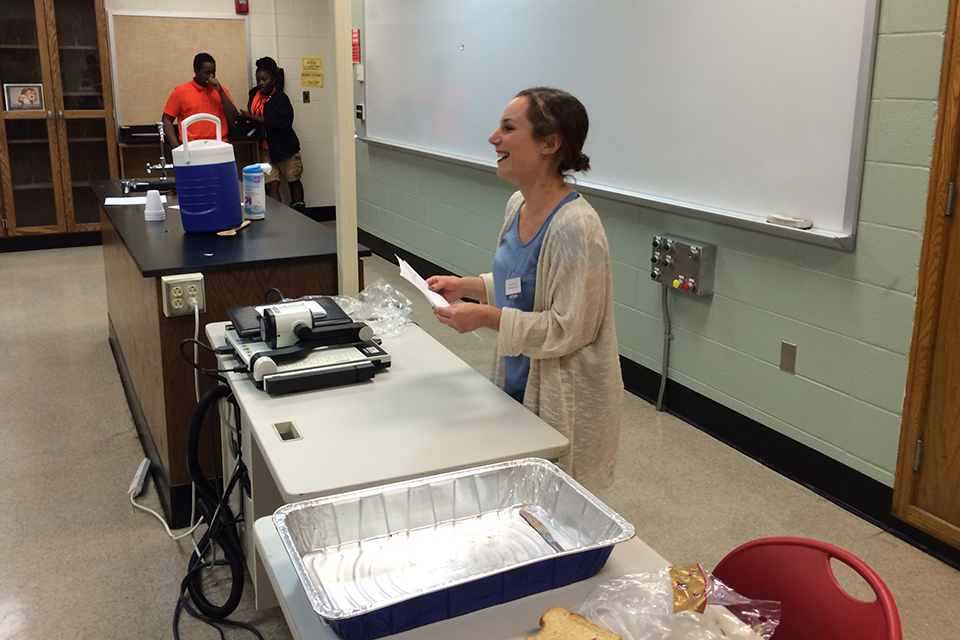‘WHAT IT TAKES TO TEACH…’
 As I walked through the hallways of Broad Ripple with first-day jitters, I was welcomed by artwork on the walls, Rocket pride, and an overwhelming amount of smiling faces. The first couple of sessions were a bit challenging considering each mentor had a group of five students. With such great attendance, I could tell that programs like Writing in the Schools are definitely needed. It’s a place where students can relax, express themselves, and seek mentorship—something I wish I had in my secondary education. I was first introduced to creative writing as an undergraduate student and was relieved when given the chance to write the stories that were hidden in my subconscious.
As I walked through the hallways of Broad Ripple with first-day jitters, I was welcomed by artwork on the walls, Rocket pride, and an overwhelming amount of smiling faces. The first couple of sessions were a bit challenging considering each mentor had a group of five students. With such great attendance, I could tell that programs like Writing in the Schools are definitely needed. It’s a place where students can relax, express themselves, and seek mentorship—something I wish I had in my secondary education. I was first introduced to creative writing as an undergraduate student and was relieved when given the chance to write the stories that were hidden in my subconscious.
What I was most interested in when enrolling in WITS was to learn if I had what it takes to teach, as I started with zero experience. So far, I’ve been able to work with many talented writers, including some poetry machines, who produce five pieces compared to my one during our sessions together. Most recently, a young girl named Lacie wandered over to my table, one of the sixth-graders in WITS. Lacie is petite, shy, and can usually be found with her head in her notebook, quietly immersed in writing her story.
As the group unwinded with their sandwiches, I began a warm-up exercise. I thought it might useful to share what the differences are between concrete and abstract words. I explained the concept as it was explained to me. Abstract words are those you cannot visually see, and often everyone has their own individual image of it. These are words like “love” and “freedom.” Concrete words give us a clear, universal picture. These are words like “rose” and “pencil.” I then began highlighting words from a poetry book and asking if it was concrete or abstract. The students in my group quickly caught on and were blurting out answers.
The prompt I focused on that day, was to write about an animal that was not a pet. I offered they think about their spirit animals. I asked Lacie what animal she is. She smiled and said, “a bird because I’m a free spirit.” I asked her what kind of bird specifically, and she looked puzzled. We began searching for birds on my laptop and decided on a hummingbird—mainly because she’s small, quiet, and brings joy to others. She wrote hummingbird on her paper and quickly began jotting down words for the free association exercise that would compare her personality to the animal. She looked up from her notebook and said, “You know what’s funny? I’m allergic to pollen!” We laughed, and I told her that idea is perfect to write about. When I got home that night, I sat down to write a poem about a hummingbird who was allergic to pollen, so she adapted to living near the sea. As a mentor, I hope to resemble someone who was in the students’ shoes not too long ago, and inspire them to turn their stories into a rewarding career.
Natalie Tombasco is a graduate student in the MFA Creative Writing program.
